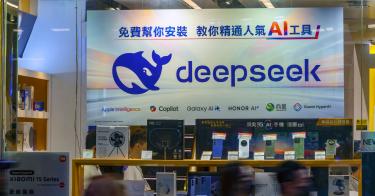The U.S.-China technology competition is being hindered by a lack of agreed-upon facts, leading to a fractured and ineffective policy debate.
- To solve this, Congress should mandate an annual “China Tech Power” report, mirroring the Pentagon’s influential “China Military Power” report.
- This unclassified document, supported by declassified intelligence, would provide a trusted, public baseline on China’s technological capabilities in areas like AI and semiconductors, the effectiveness of U.S. export controls, and the extent of Beijing’s military-civil fusion.
- Such a report is critical for aligning government and private sector strategies in this new Cold War.
The U.S. Needs A “China Tech Power Report”
The U.S.-China technology competition is heating up, but increasingly, policy discussions are playing out on a split screen. Take recent debates over technology export controls.
On one side, critics argue that export controls have failed to meaningfully delay Chinese tech development, pointing to impressive achievements of Chinese AI tools such as DeepSeek. On the other side, proponents claim that export controls have stalled Beijing’s progress in critical sectors and are essential for maintaining U.S. technological supremacy.
Vibrant debate on the U.S.-China tech competition is welcome. But sometimes it seems as though stakeholders are operating on completely different sets of facts.
>>> U.S. Must Extract China From Defense-Industry’s Supply Chains
For example, Jensen Hwang, CEO of U.S. technology firm NVIDIA, recently claimed that the Chinese military is not using chips produced by his company. Yet open-source researchers disagree, pointing to NVIDIA chips discovered in People’s Liberation Army (PLA) contracts.
There’s similar widespread disagreement on the scale of Chinese chip-smuggling activities.
Some former administration officials estimate that China has only smuggled 25,000 banned NVIDIA chips into the country. Other think tanks estimate that anywhere from 10,000 to several hundred thousands of banned chips may have been smuggled into China (with a median estimate of around 140,000). Lennart Heim, a RAND researcher, estimates that nearly 3 million TSMC chips that violated U.S. export controls likely ended up with Huawei.
The stakes of this debate could not be higher. And to have a proper debate, all sides must work from the same set of facts. Over the last decade, Washington has enacted wide-ranging export controls and sanctions to restrict Chinese access to U.S. technology. At the same time, the U.S. government has sought to accelerate technological development inside America’s borders.
These market interventions affect tens of billions of dollars in capital allocation, as well as the balance sheets of key technology firms—and they may well determine the balance of power in the China-U.S. New Cold War.
The Need for a China Tech Power Report
To solve the current factual disagreement, Congress should direct the Defense and Commerce Departments to work in consultation with the intelligence community to publish an annual China Tech Power report. The report should aspire to be the most detailed and trusted publicly available source of information on China’s technological capabilities.
Conceptually, this report would be similar to the Department of Defense’s annual China Military Power report, which plays an essential role in creating a baseline set of facts for D.C. policymakers to debate the state of the U.S.-China military balance.
Based on open-source information and declassified intelligence, the tech report would survey Chinese advances in critical technology areas from AI to robotics, identifying key government and corporate actors in China driving the research. It should also assess China’s access to semiconductors, gauging the impact of U.S. export controls and of Chinese efforts to circumvent those restrictions.
Such a report is critical, as key decisionmakers are non-government, private sector actors who do not have access to classified intelligence. And like the China Military Power report, this report could be published in unclassified form, with a classified annex as appropriate.
Currently, the China Military Power report plays a critical role in fostering informed debate by providing new information or confirming datapoints for which PLA watchers had only circumstantial evidence. A China Tech Power report could play a similar role in the tech domain.
In June, a senior Commerce Department official confirmed that U.S. export controls forced Huawei to cap Ascend chip production to 200,000 chips in 2025, a number far too low to meet Chinese domestic demand. A China Tech Power report could disclose the updated figures annually, thus keeping stakeholders informed.
A China Tech Power Report could also reaffirm facts that are widely suspected but not authoritatively confirmed. After DeepSeek’s new AI model astonished Western audiences, analysts quickly started to speculate about the company’s ties to the Chinese military. In June, the U.S. government confirmed that the Chinese AI company is aiding China’s military and intelligence operations.
>>> Are We Beyond the Event Horizon of War in the Pacific?
A report could provide an opportunity for the government to publicly declare whether Chinese technology companies have ties to the PLA and China’s military-industrial complex.
Among other things, a future China Tech Power Report should include:
- A general assessment of Chinese technological advances in key areas such as AI, quantum, robotics, biotech, etc. For each tech area, this assessment should include: a list of major Chinese corporate, academic, and state actors active in the field; gap analysis of whether the U.S. or China is ahead; evidence of PLA civil-military fusion; and an assessment of whether China is benefiting from licit and illicit tech transfers from the West.
- An assessment of what dual-use defense-applicable technology is currently reaching China from the United States or from American allies. This assessment would inform debate on what export controls are needed to keep defense technology out of the hands of the People’s Liberation Army.
- Key datapoints regarding China’s semiconductor industry and the impact of export controls, including: an estimate of China’s total high-end chip production capacity; assessment of the number of controlled chips that China has illegally acquired through smuggling; an assessment of the proportion of Chinese and Western chips in the server stacks of key Chinese companies such as DeepSeek; an estimate of the total number of high-end controlled chips that China has stockpiled prior to the imposition of export controls; an analysis on China’s efforts to develop a domestic alternative to controlled Western inputs such as EDA and chip-making tools; an analysis of Chinese domestic chips and how their technical capabilities compare with their U.S. counterparts; and the number of export licenses given to Chinese companies on the Entity List.
When it comes to U.S.-China relations, the technological power balance is becoming just as important as the military balance of power. It is long past time for the U.S. government to produce a China Tech Power report, which could prove even more consequential than the China Military Power report.
This piece originally appeared in the National Security Journal




